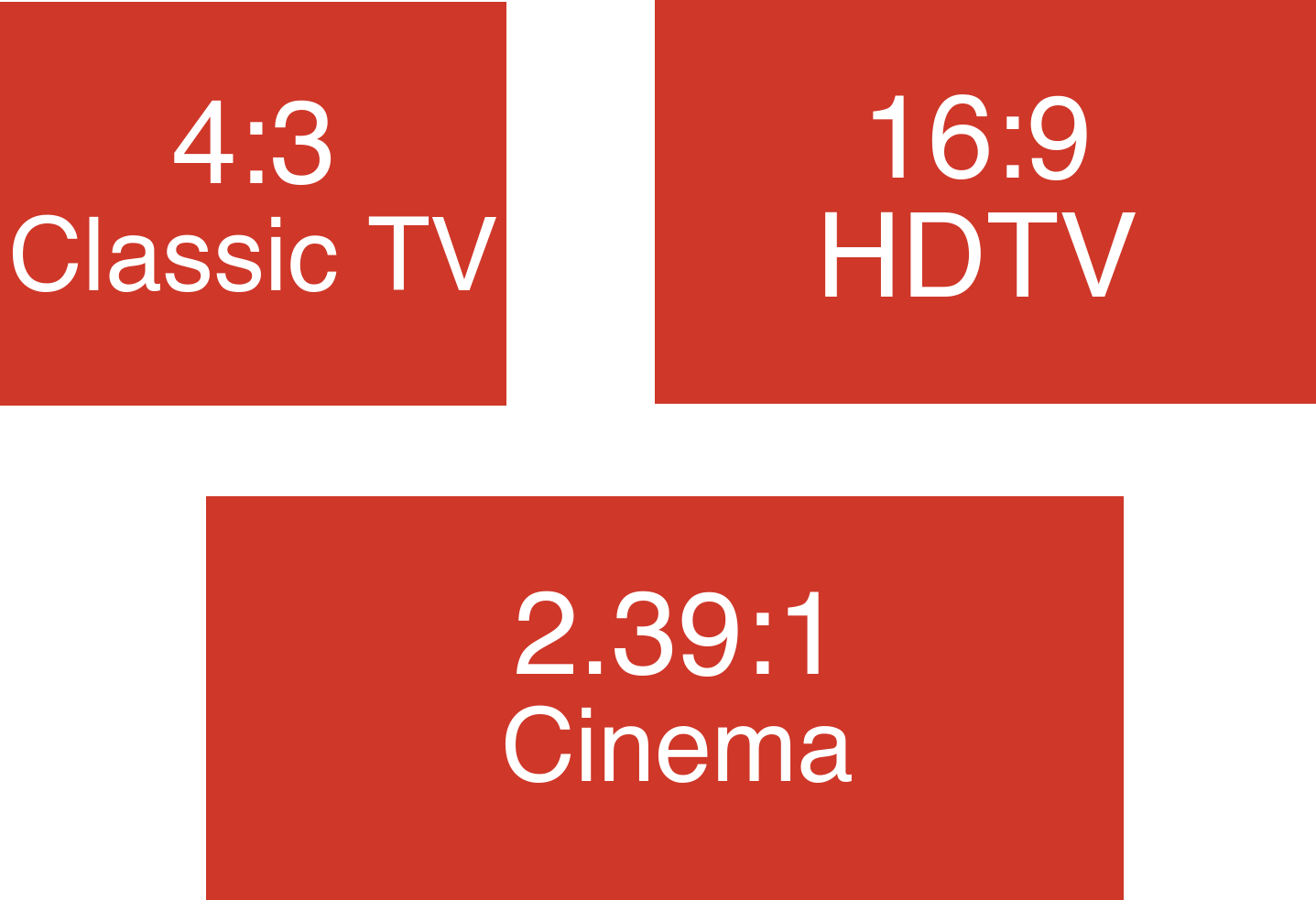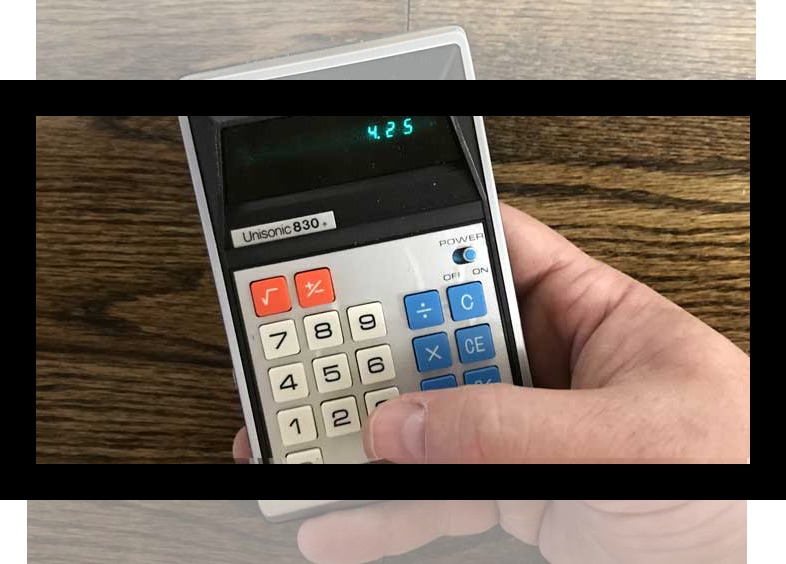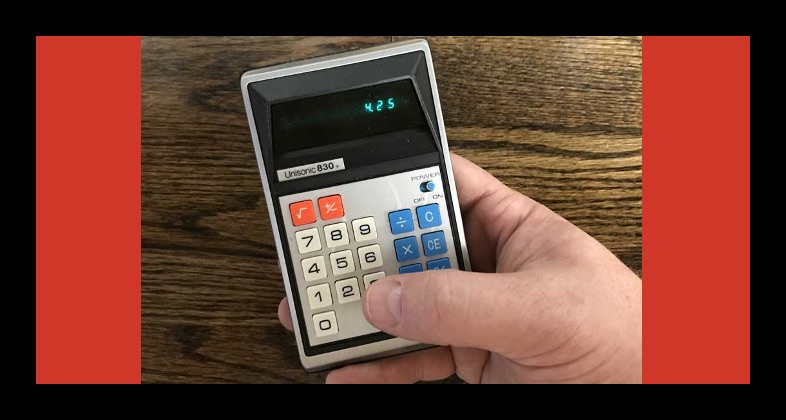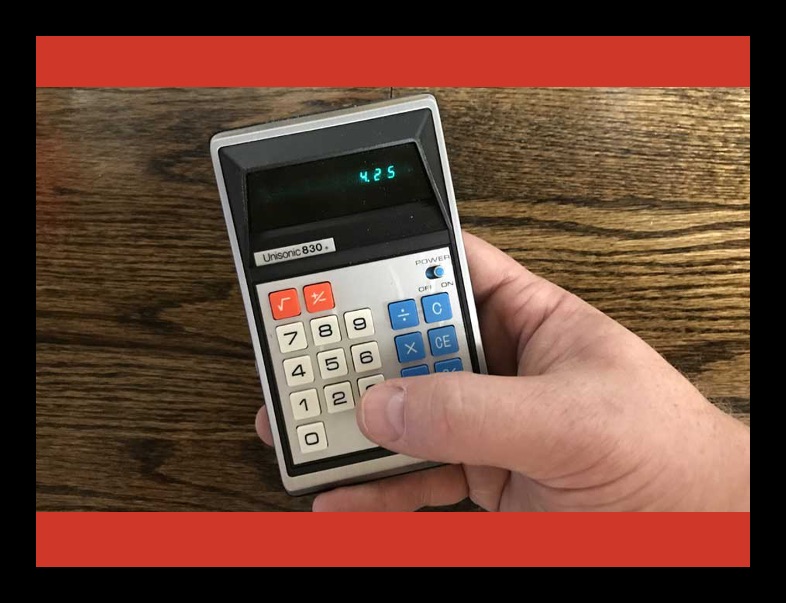Aspect Ratio Calculator
The ultimate aspect ratio calculator calculates the aspect ratio for video or image sizes, scales a resolution using the same aspect ratio, resizes images and video to new dimensions, and converts aspect ratios.
Calculate the Aspect Ratio for a Resolution
Scale a Resolution Maintaining the Aspect Ratio
Aspect Ratio:
On this page:
How to Calculate an Aspect Ratio
An aspect ratio indicates the shape of a video screen or image. Screens display images as a grid of colored squares or rectangles, and the width and height of that grid is the resolution.
These squares or rectangles are called pixels. The aspect ratio is the ratio of the number of columns to the number of rows of pixels that make up a video display or image.
Aspect Ratio Formula
An aspect ratio is the ratio of the width of an image to its height.
AR = width / height
However, an aspect ratio is often reduced to a common format based on industry standards.
Aspect ratios for video applications are usually reduced to either 16:9, 16:10, or 4:3. Some video aspect ratios cannot be evenly reduced into these ratios, in which case they should be reduced to the number of columns to 1 row of pixels.
For instance, cinema projection screens often use a ratio of 2.35:1 or 2.4:1 (cinemascope). Learn more about these on our projector calculator.
How to Reduce an Aspect Ratio
In our experience, the easiest way to reduce a ratio is to find the greatest common factor of both the number of columns and the number of rows. Then, divide the number of rows and the number of columns by the greatest common factor.
For example, let’s find the aspect ratio for a 3840×2160 resolution display.
The greatest common factor of both 3840 and 2160 is 240. So, you can divide both the number of rows and the number of columns by 240 to reduce the resolution down to its aspect ratio.
columns = 3840 ÷ 240 = 16
rows = 2160 ÷ 240 = 9
aspect ratio = 16:9
How to Scale an Aspect Ratio
Sometimes you need to scale an aspect ratio to a larger or smaller resolution. To scale an aspect ratio, multiply both sides of the resolution by the scale factor.
You can use our scale calculator to find the scale factor or scale measurements.
For example, let’s double the 4k 3840×2160 resolution to find the equivalent 8k resolution.
To double a resolution, multiply both parts of the resolution by 2
num columns = 3840 × 2 = 7680
num columns = 2160 × 2 = 4320
Thus, 4k scaled to 8k resolution is equal to 7680×4320.
Common Image Aspect Ratios
While images come in many shapes and sizes, there are some aspect ratios that are more commonly used for images and photography.
| Aspect Ratio | Image Format |
|---|---|
| 1:1 | Square |
| 3:4 | Portrait |
| 2:3 | Portrait |
| 5:7 | Portrait |
| 8:10 | Portrait |
| 4:3 | Landscape |
| 3:2 | Landscape |
| 7:5 | Landscape |
| 10:8 | Landscape |
| 16:9 | Landscape |
Common Video Aspect Ratios
There are many aspect ratios used for various purposes in film and video, and some are more common than others. The most common is 16:9; see the table below for the most common ratios for each type of use.
| Video Format | Common Aspect Ratios |
|---|---|
| Cinema | 1.85:1, 2.39:1 |
| TV Video | 4:3, 16:9 |
| Computers | 4:3, 16:10 |
See a full list of modern aspect ratios and resolutions.

How to Convert Video to a Different Aspect Ratio
Sometimes video in one aspect ratio needs to be displayed on a screen that is a different resolution, for example, when displaying standard definition 4:3 TV on a high definition 16:9 display.
There are a few different ways to display videos that do not have the same aspect ratio as the screen.
Cropping
The video can be zoomed so that there is no extra space, which will crop part of the video.
For example, a 4:3 video can be zoomed to scale the width to that of a 16:9 screen, cropping the top and bottom of the video.

Pillar-Boxing
The video can be pillar-boxed, keeping the video’s height the same as the display when the video aspect ratio is thinner than the display aspect ratio.
For example, a 4:3 video can be zoomed, scaling the video’s height to the height of the display, resulting in bars on either side of the video.

Letterboxing
The video can be letterboxed, keeping the video’s width the same as the display when the video aspect ratio is wider than the display aspect ratio.
For example, a 16:9 video can be zoomed so that the video’s width is the same as the display’s width, resulting in bars on the top and bottom of the video.

You might be interested in our TV viewing distance calculator to calculate the resolution and size of TV you should get based on your seating distance.


